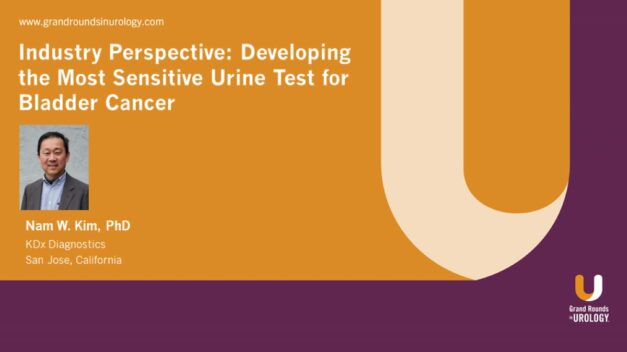Industry Perspective: Developing the Most Sensitive Urine Test for Bladder Cancer
Nam W. Kim, PhD, Co-Founder and Chief Executive Officer & Chief Technology Officer of KDx Diagnostics, summarizes the challenges of bladder cancer diagnosis and introduces the URO17 test as an overall solution. He begins by discussing the unmet clinical need in bladder cancer for an accurate, non-invasive test due to difficult diagnosis of the disease. Dr. Kim then describes the URO17 urine test as a diagnostic that detects keratin-17 (K17) protein expression in urine cytology samples. He then reviews several studies on the efficacy of the URO17 test. Dr. Kim explains that the first study found that K17 promotes nuclear export, subsequent degradation of tumor suppressor p27 KIP1, and sustained proliferation and tumor growth by overcoming G1-S checkpoint in cancer cells. He also discusses KDx’s initial study evaluating K17 expression in bladder tissue that found that there was a significant increase in both low and high grade cancer when compared to normal tissues and showed the URO17 test to have 100% sensitivity and 96% specificity in detecting bladder cancer cells in recurrent bladder cancer patients. A study of the URO17 test’s efficacy in the hematuria population found that the test has a sensitivity of 100% and 92.6% specificity in detecting new bladder cancer. Dr. Kim concludes by describing a final study that looked at K17 expression in recurrent cancer and hematuria populations and which found similar results to the previous studies.
Read More
